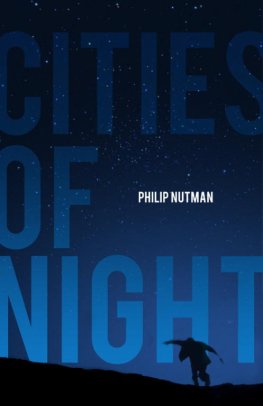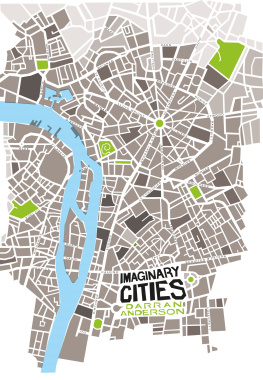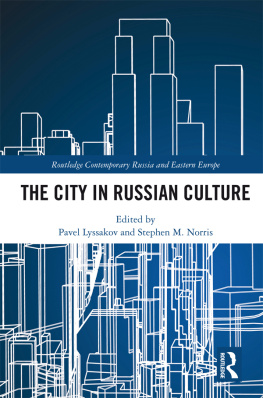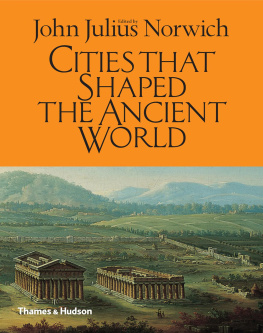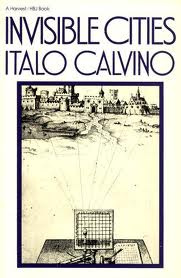Darran Anderson - Imaginary cities: a tour of dream cities, nightmare cities, and everywhere in between
Here you can read online Darran Anderson - Imaginary cities: a tour of dream cities, nightmare cities, and everywhere in between full text of the book (entire story) in english for free. Download pdf and epub, get meaning, cover and reviews about this ebook. year: 2017, publisher: The University of Chicago Press, genre: Non-fiction. Description of the work, (preface) as well as reviews are available. Best literature library LitArk.com created for fans of good reading and offers a wide selection of genres:
Romance novel
Science fiction
Adventure
Detective
Science
History
Home and family
Prose
Art
Politics
Computer
Non-fiction
Religion
Business
Children
Humor
Choose a favorite category and find really read worthwhile books. Enjoy immersion in the world of imagination, feel the emotions of the characters or learn something new for yourself, make an fascinating discovery.

- Book:Imaginary cities: a tour of dream cities, nightmare cities, and everywhere in between
- Author:
- Publisher:The University of Chicago Press
- Genre:
- Year:2017
- Rating:4 / 5
- Favourites:Add to favourites
- Your mark:
- 80
- 1
- 2
- 3
- 4
- 5
Imaginary cities: a tour of dream cities, nightmare cities, and everywhere in between: summary, description and annotation
We offer to read an annotation, description, summary or preface (depends on what the author of the book "Imaginary cities: a tour of dream cities, nightmare cities, and everywhere in between" wrote himself). If you haven't found the necessary information about the book — write in the comments, we will try to find it.
Imaginary cities: a tour of dream cities, nightmare cities, and everywhere in between — read online for free the complete book (whole text) full work
Below is the text of the book, divided by pages. System saving the place of the last page read, allows you to conveniently read the book "Imaginary cities: a tour of dream cities, nightmare cities, and everywhere in between" online for free, without having to search again every time where you left off. Put a bookmark, and you can go to the page where you finished reading at any time.
Font size:
Interval:
Bookmark:
IMAGINARY CITIES
A Tour of Dream Cities, Nightmare Cities, and Everywhere in Between
Darran Anderson
THE UNIVERSITY OF CHICAGO PRESS
CHICAGO
The University of Chicago Press, Chicago 60637
2015 by Darran Anderson
All rights reserved. No part of this book may be used or reproduced in any manner whatsoever without written permission, except in the case of brief quotations in critical articles and reviews. For more information, contact the University of Chicago Press, 1427 E. 60th St., Chicago, IL 60637.
Published 2017
Printed in the United States of America
First published in the UK by Influx Press under the title Imaginary Cities.
26 25 24 23 22 21 20 19 18 17 1 2 3 4 5
ISBN-13: 978-0-226-47030-6 (paper)
ISBN-13: 978-0-226-47044-3 (e-book)
DOI: 10.7208/chicago/9780226470443.001.0001
LIBRARY OF CONGRESS CATALOGING-IN-PUBLICATION DATA
Names: Anderson, Darran, author.
Title: Imaginary cities : a tour of dream cities, nightmare cities, and everywhere in between / Darran Anderson.
Description: Chicago : London : The University of Chicago Press, 2017.
Identifiers: LCCN 2016042849 | ISBN 9780226470306 (pbk. : alk. paper) | ISBN 9780226470443 (e-book)
Subjects: LCSH: Imaginary places. | Imaginary places in literature. | Imaginary places in art. | Imaginary placesReligious aspects.
Classification: LCC GR940.A544 2017 | DDC 398/.42dc23 LC record available at https://lccn.loc.gov/2016042849
 This paper meets the requirements of ANSI/NISO Z39.48-1992 (Permanence of Paper).
This paper meets the requirements of ANSI/NISO Z39.48-1992 (Permanence of Paper).
To Christiana, Caspian and the future.
Contents
IMAGINARY CITIES
Darran Anderson
Cities, like dreams, are made of desires and fears, even if the thread of their discourse is secret, their rules are absurd, their perspectives deceitful, and everything conceals something else.
Italo Calvino, Invisible Cities
The Men of a Million Lies, or How We Imagine the World
Platos Cinema
Before there were films, there was cinema; the flickering shadow play of fire and motion on limestone cave walls. We might assume the paintings the more bohemian troglodytes smudged with charcoal and ochre were simply representational, charting exaggerated auroch kills. What then of the oldest symbol archaeologists have found? A simple red disc carbon-dated to 40, 800 years ago, in the depths of Cueva de El Castillo, Cantabria. Was it the infernal crucible of our sun? It was logical for the life-giving ball of magnetic fields and plasma to be worshipped, before mankinds act of folly and vanity in creating gods in its simian image. In the thousands of years to follow, the descendants of the cave-artists would depict on stone, clay, bone, bamboo, wood, papyrus, wax, fabric, slate, paper and pixels, everything that existed beneath that sun; what is and, most crucially for our purposes here, what might be.
Consider, however, that red disc as something else entirely. We view the existence of everything bound by relativity. There is no escape from context. The eye, and its position, is the fulcrum on which the entire visible universe pivots. When the artist ventured into the caverns to leave a circular mark on eternity, he or she may well have been painting the singularity that is the pupil of a human eye. Interpretation is everything. Perhaps in the half-light, the artists, as much pattern-seeking mammals as we are, painted not simply what theyd seen but what theyd hallucinated or dreamt, in some kind of desperate prophecy or ceremonial magic. Humanity has always looked for the dubious reassurance of auguries and, through wishful thinking and pareidolia, has continually found threats of danger and promises of treasure. Might we have envisaged then what was to come? A floating city on a shimmering horizon. Minarets in frost. A Neolithic painter dreaming of skyscrapers.
Darkness is misconceived as nothingness; rather it is a state of intrinsic light, within which a great deal of visual information may be discerned; a catalyst for the unintentional creative process known as prisoners cinema It can walk through walls or be imprisoned by the sky.
The Deceptions of Memory
In 1296, the middle-aged Marco Polo found himself inconveniently in prison. He had been captured in the Eastern Mediterranean at the helm of a Venetian galley by rival sailors from the Most Serene Republic of Genoa. Given that the two republics were locked in the War of Saint Sabas, this was inopportune, especially given he had a siege catapult onboard. Polos fortunes improved however when he discovered his cellmate was a writer, Rustichello of Pisa, who was an enthusiastic listener to Polos tall-tales of voyages in the mysterious Orient. This was good luck as it made Polos fame. It was bad luck for the very same reason.
Initially written as a guide for budding merchants, the asides and tangents that made up the quartet of books Description of the World were fascinating yet scarcely believable. They quickly became immensely popular yet they earned Polo the cruel nickname Il Millione (the man of a million lies). It was doubted by some that hed even travelled at all except around his own vast imagination.
The accounts did however contain many genuine discoveries alongside exaggerations, half-truths and myths (How the Prayer .
Polos travelogue notes many curious cities on his winding road (Baudas, Samarcan, Caracoron) culminating in the opulent palaces of the Chinese Mongol Emperor Kublai Khan, at whose court he was guest for seventeen years. The explorers recollections range from the mercantile (lists of industries and natural resources) to the fanciful; cities where the inhabitants are perpetually drunk, where men eat birds and ride around on stags, where marriages are arranged between ghosts, and the lord in his marble palace drinks wine from levitating goblets. Often Polo would add boasts, no one could imagine finer recurs, and even suggest he was holding back for fear of arousing incredulity in the readers (I will relate none of this in this book of ours; people would be amazed if they heard it, but it would serve no good purpose) which only served to further his ridicule. Beyond their narrow confines, the world was more extraordinary than his sceptics could imagine. Raised in the seemingly-impossible floating city of Venice, a maze of canals and alleys built on stilts in a lagoon, Marco Polo had no such limitations. Imaginary cities posed no threat to a man who was born in one.
When a book leaves the protective custody of its creator, it is rightly at the mercy of its readers but also, if prominent enough, at the hands of those who have not read it. In the age before the printing press, Polos tales spread largely through word of mouth, with cumulative error compounded by jealousies and speculations. The stories, already partially there, metamorphosed further into myth. To accuse Polo of inventing fictions is to assume that perception and memory are not partially fictional to begin with. I will have spent my life trying to understand the function of remembering, the narrator in Chris Markers Sans Soleil acknowledges, which is not the opposite of forgetting, but rather its lining. We do not remember. We rewrite memory much as history is rewritten. Fragments of the real are retained, though they evolve with time to fit the wisdom or fallacy of hindsight and are juxtaposed with memories of dreams and thoughts and memories of memories. We are unreliable narrators even to ourselves.
Nostalgia is not what it used to be. In Terence Davies The Long Day Closes, the director remembers a blissful, family tableau at Christmas, where an old streetlamp and snow appear within the living room. It did not strictly happen and yet there is no lie . By its ethereal light, things we think we know appear to change.
Next pageFont size:
Interval:
Bookmark:
Similar books «Imaginary cities: a tour of dream cities, nightmare cities, and everywhere in between»
Look at similar books to Imaginary cities: a tour of dream cities, nightmare cities, and everywhere in between. We have selected literature similar in name and meaning in the hope of providing readers with more options to find new, interesting, not yet read works.
Discussion, reviews of the book Imaginary cities: a tour of dream cities, nightmare cities, and everywhere in between and just readers' own opinions. Leave your comments, write what you think about the work, its meaning or the main characters. Specify what exactly you liked and what you didn't like, and why you think so.

